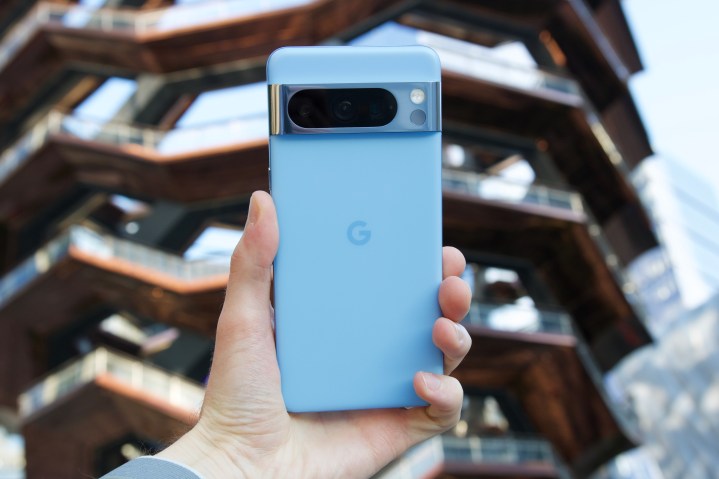
I have a not-so-surprising confession: I tend to want every new phone that comes out. I’m a sucker for good marketing, and smartphone launches have some of the best marketing around. Whether it’s a new feature like a telephoto lens, a bigger battery, a more vivid display, or a radically new form factor, I get a bad case of fear of missing out almost every time. It’s why I often find myself buying the most expensive model, despite not really needing to.
So, I was slightly confused when the recent launch of the Google Pixel 8 Pro didn’t leave me feeling like I wanted the phone at all. Or rather, I did, but the desire was undercut by another emotion: annoyance. I’m mad at the Pixel 8 Pro, but it’s not for the reasons you might think.
Figuring out why I was so annoyed was a real journey. Here’s what I discovered about how I feel about the Pixel 8 Pro — and Google as a whole — and why I ultimately won’t be buying the phone.
Is it because I’m a Pixel 7 Pro owner?

My current experiences with Google were the first place I started, and honestly, it’s a good place to look. My time with the Google Pixel 7 Pro has been tough, to say the least. It’s a great phone, but my experience was marred by a number of bugs that left me feeling like I should never have bought the Pixel 7 Pro.
Most of these bugs didn’t break the phone, but they were extremely annoying. The Wi-Fi would drop and need to be manually reset, and the phone would sometimes refuse to unlock. A lot of these bugs have been patched out, but I’ve encountered a new issue in the meantime: a slightly wonky charging port.

I wasn’t alone in this, either. Problems differed from person to person, but it was clear there were issues with the Pro line as a whole. Mobile Editor Joe Maring had the worst time of it where the Digital Trends team was concerned, with black screens coming up while playing games, entire panels breaking, and ominous shadows being cast over the screen after leaving Twitter. Andy Boxall didn’t encounter any of these problems during his time with the Pro, with his model simply being a little sporadic when it came to Wi-Fi and Bluetooth connections, but all of this underlines the fact that Pixel 7 Pro needed more time in the oven.
Does that sour experience still curdle on my tongue? Not really. While I can’t speak for all Pixel 7 Pro users, Google has dealt with a lot of the bugs that affected me, and now my phone is largely working as it should. Don’t get me wrong, it’s not perfect by any means, but the good finally outweighs the bad.
So, with the Pixel 7 Pro largely in the clear, I moved on to interrogate my next suspect: the Google Pixel 8 Pro.
Is it because of the Pixel 8 Pro’s new toys?
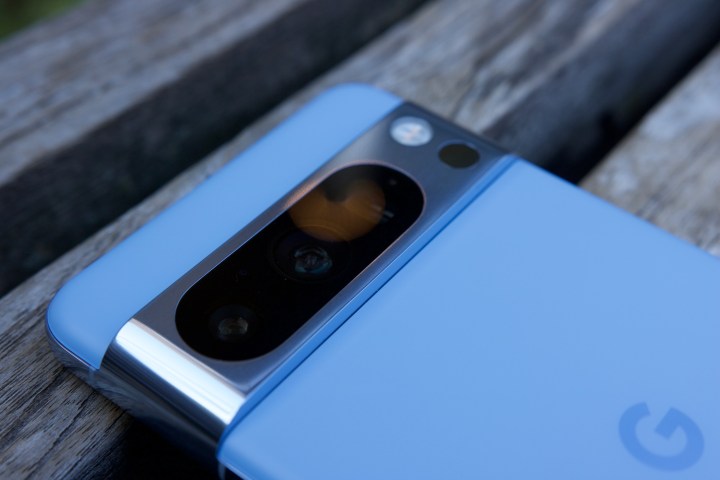
There’s no way to sugarcoat this: If I was mad at the Pixel 8 Pro because it’s better than my current phone, then I have a serious case of sour grapes.
But I was also fairly sure this wasn’t the case. Frankly, when you take a good, long look at the Pixel 8 Pro, there’s not actually that much that’s worth getting annoyed about. The temperature sensor is an interesting addition, but it’s not hard to see it disappearing like the Google Pixel 4‘s Motion Sense movement-sensing tech. The design has been tweaked slightly, which is easily ignored, and the same is true for the display, which now dips to 1Hz instead of 10Hz. I can see why I’d want that, but is the lack of it keeping me up at night? Absolutely not.
Now, we move into the areas that do register some element of FOMO, and it’s the Magic Editor that sits on top of that list. Magic Eraser is quite something, but Magic Editor blows right past it into a new realm altogether. But honestly, if my use of Magic Eraser is anything to go by, I’m likely to use Magic Editor a few times before eventually forgetting it exists altogether, so I’m not really annoyed too much about that, either.
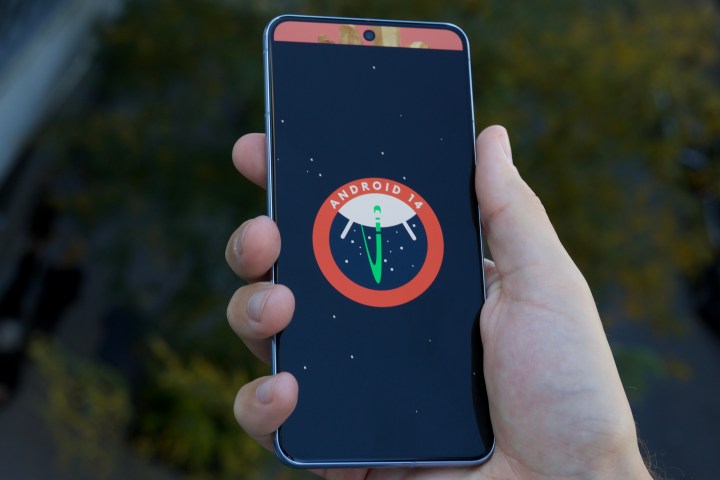
So far, so good. But here’s where I ran into my first real annoyance: updates. Yes, you read that right — the hardest improvement to ignore is the seven-year commitment to updates.
Honestly, that’s the part of the phone’s announcement that took my breath away. Seven years is a long time. If the first Google Pixel phone had received seven years of updates, it would only just have stopped receiving Android updates this year. That’s how enormous a commitment this is from Google, and if it’s able to keep it up, this is a solid reason to buy a Google Pixel 8. That said, Google’s record on support is … not great.
But for some reason, only the Pixel 8 range benefits from this enormous update promise. It’s infuriating that the Pixel 7 Pro only gets three years of major Android updates, less than half of the Pixel 8 Pro. Why? Because of an arbitrary cutoff. It would have cost Google very little to extend this update promise to some of its more recent smartphones. In a sense, I feel like I deserve it for putting up with the bug-ridden mess that was the early Pixel 7 Pro.
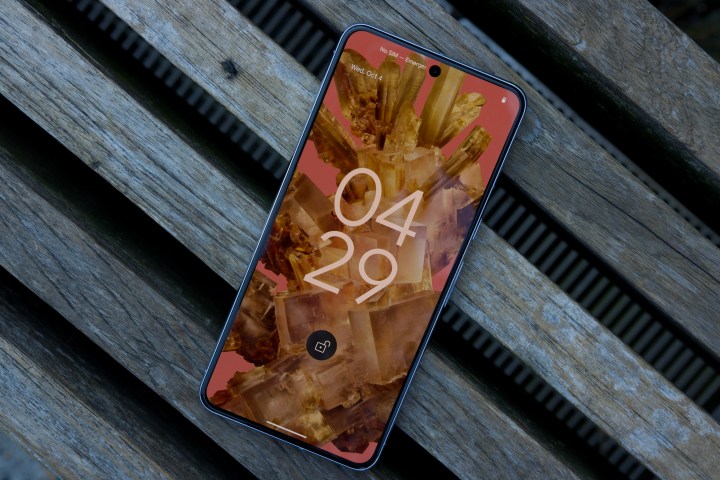
Sure, Google has made a lot of fixes to the phone, but that took the better part of a year — or roughly a third of my phone’s effective life span. It more or less took until the Pixel 8 Pro was available for me to feel like I had a functioning Pixel phone. A longer update commitment from Google would have gone a long way toward making me feel more positive about struggling along with a buggy smartphone for so long.
But that wasn’t it. That wasn’t the true root of my annoyance. It was a part of it, yes, but I had to dig a little deeper to find what was really bothering me. It was there, deep down, that I finally found it. But really, it shouldn’t have taken me so long to figure out — because the reason was right there, on Google’s own store.
It’s because Google doesn’t care about me

The Google Pixel 7 Pro, despite some early teething problems, is a great smartphone. Heck, it’s a flagship smartphone from just last year, which means it’s powerful and extremely capable, and it’s likely to provide solid performance for years to come. I figured I would get a decent chunk of money for it if I wanted to trade it in for the Pixel 8 Pro.
After all, why wouldn’t Google want loyal customers to jump to the latest device? Google’s U.K. store advertises up to 700 British pounds off with trade-in, and hey, this is the top Pixel device from last year! I’m definitely all-in. So, I plonked my smartphone into the trade-in window for a Pixel 8 Pro, expecting that I’d have to pay a couple of hundred British pounds to get the newer device.
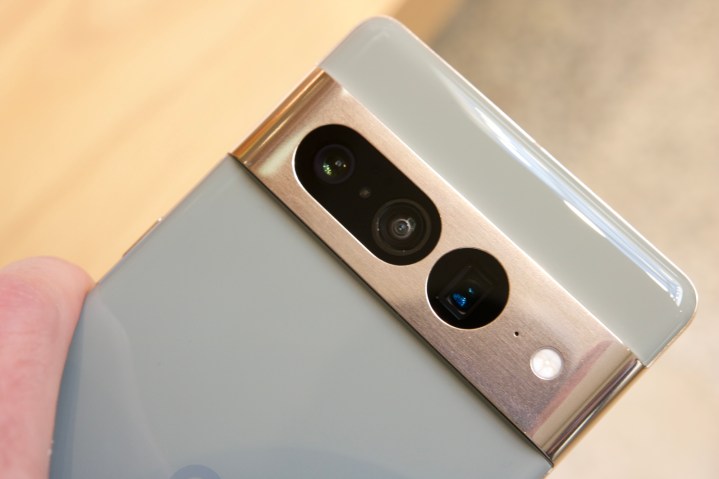
It wasn’t even close. Trading in a near-pristine 256GB Pixel 7 Pro netted me a grand total of … 347 British pounds. For a smartphone that cost almost three times that.
Google might as well have sent someone around to my house to stomp on my foot. Frankly, it’s an insult. A small part of me was amused; clearly, the Pixel 7 Pro was such a trainwreck that even Google doesn’t want one back. But the larger part of me was disgusted. I checked out the trade-in offer on Google’s U.S. store, just to make sure it wasn’t a U.K. problem, and the situation got even worse: $299. Considering the British trade-in amounted to around $420 after conversion, it turned out I was getting a better deal than my American cousins.
But it begs the question: Who does Google want phones from? You probably won’t be surprised to learn it’s Apple iPhone users. Trade in the 128GB version of the iPhone 14 Pro, and you’ll get 660 British pounds for it. Half the storage, close to twice the trade-in value.
I went down the list to find out which iPhone Google regards as the closest to its last flagship phone in value. It’s the Apple iPhone 11 Pro Max. That four-year-old device will get you three British pounds more in trade-in than the 2022 Pixel 7 Pro.
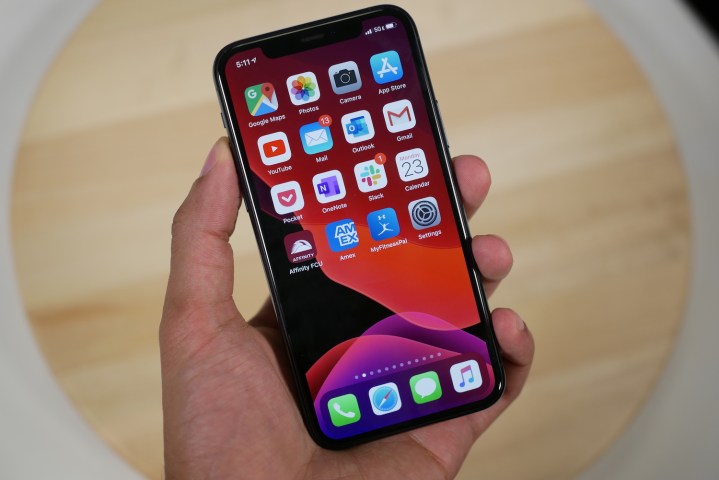
All phone companies are somewhat skimpy when it comes to trade-ins, but Google treats its own products far worse. Samsung caps trade-ins for its own phones and Apple’s phones at 500 British pounds each and even offered 500 British pounds for my Pixel 7 Pro. Apple only takes its own phones in trade, but obviously values its own phones highly — though strangely, not as highly as Google, which will offer more than Apple for an iPhone.
I get it; it makes good business sense to appeal to the competition and get them to switch. After all, a Pixel user staying a Pixel user doesn’t grow your numbers. But appealing to Apple fans shouldn’t mean kicking your faithful in the face, and it shouldn’t mean purposefully devaluing your own products. As far as Google is concerned, an Apple device from 2019 is worth basically the same amount of money as its 2022 flagship device.
That doesn’t show a lot of faith in your own product, Google, and it doesn’t make me feel like I should have much, either. As a longtime Pixel fan, it makes me mad that Google thinks so little of its range. It makes me mad about the Pixel 8 Pro, about the Pixel series as a whole, and at myself for putting so much faith in the company. So, no — I won’t be buying a Pixel 8 Pro, and Google only has itself to blame.
Editors’ Recommendations
